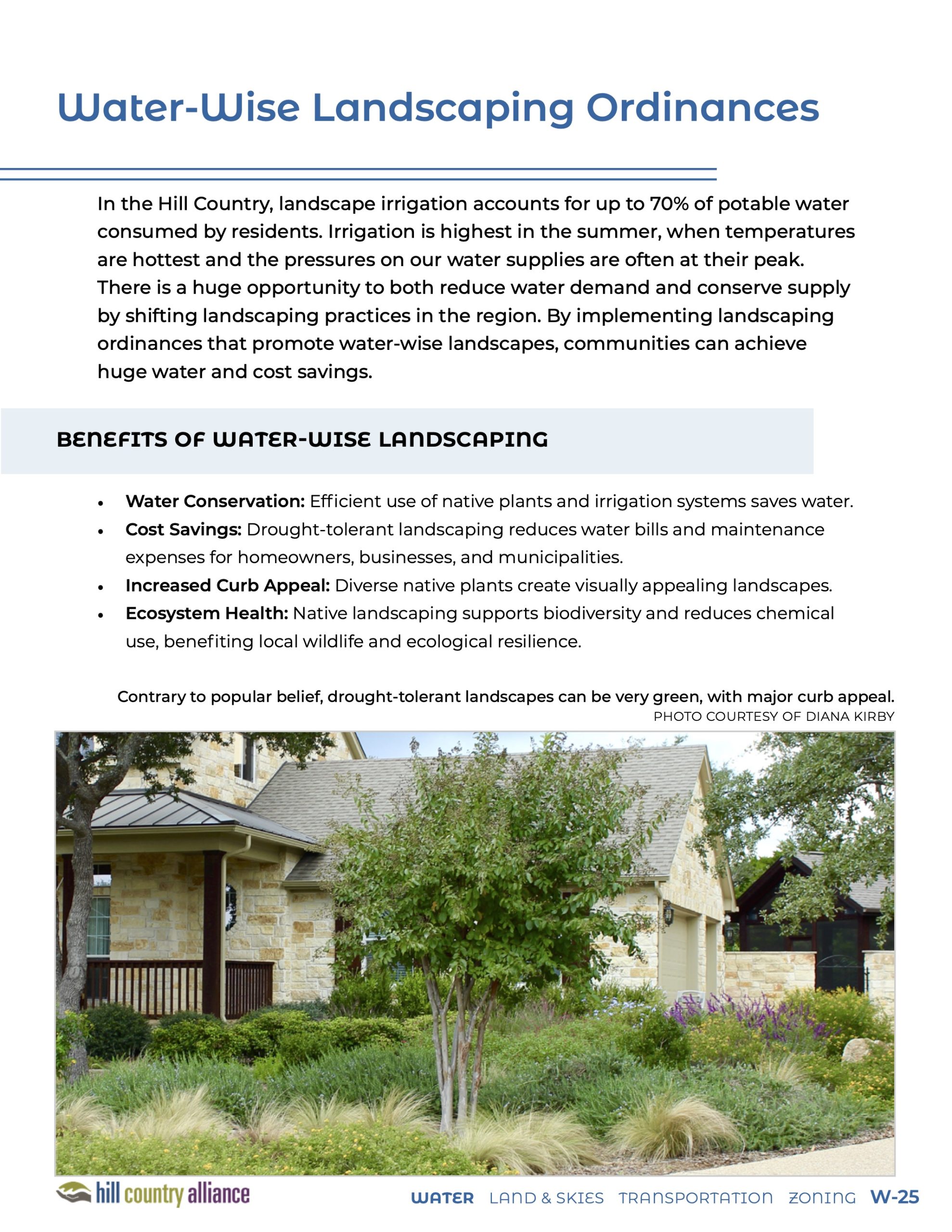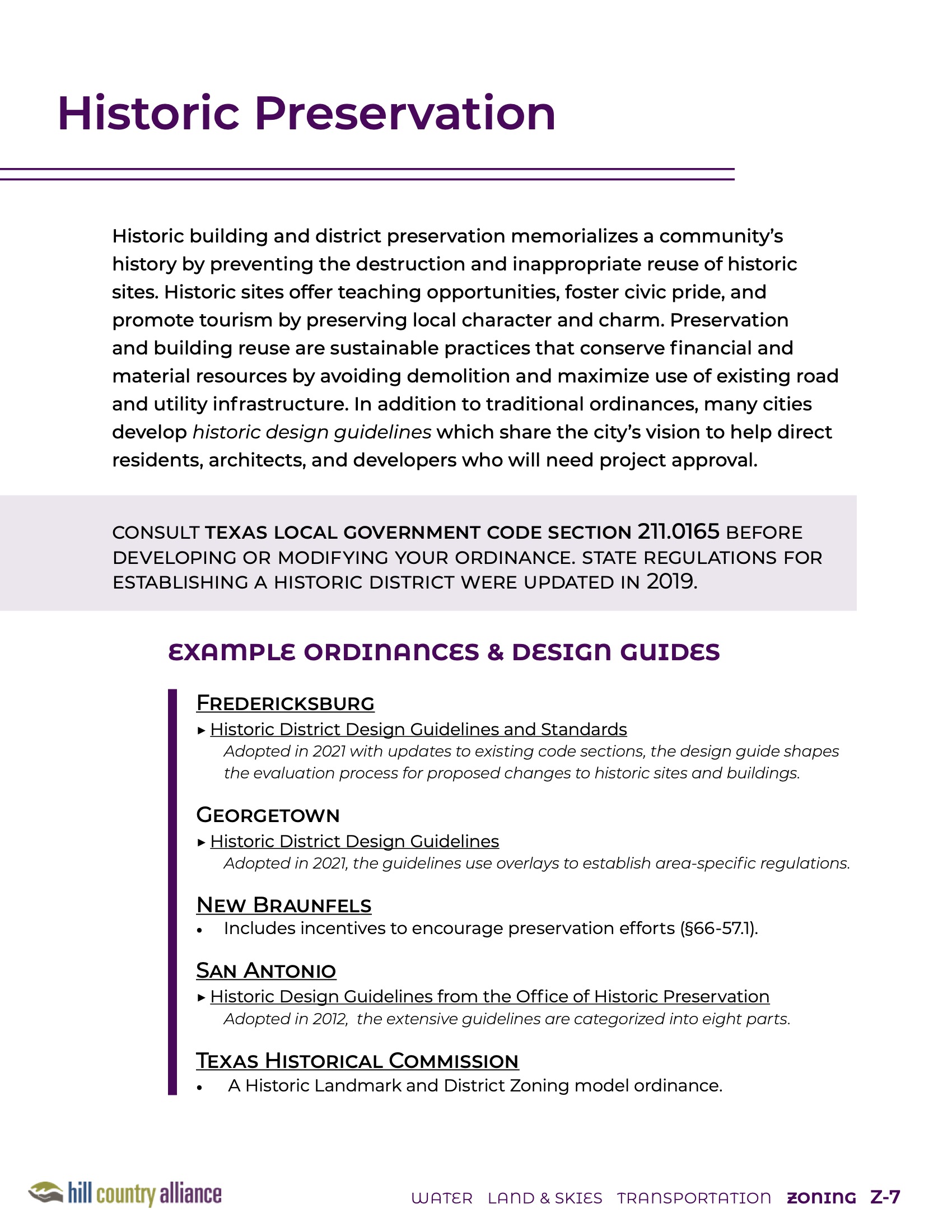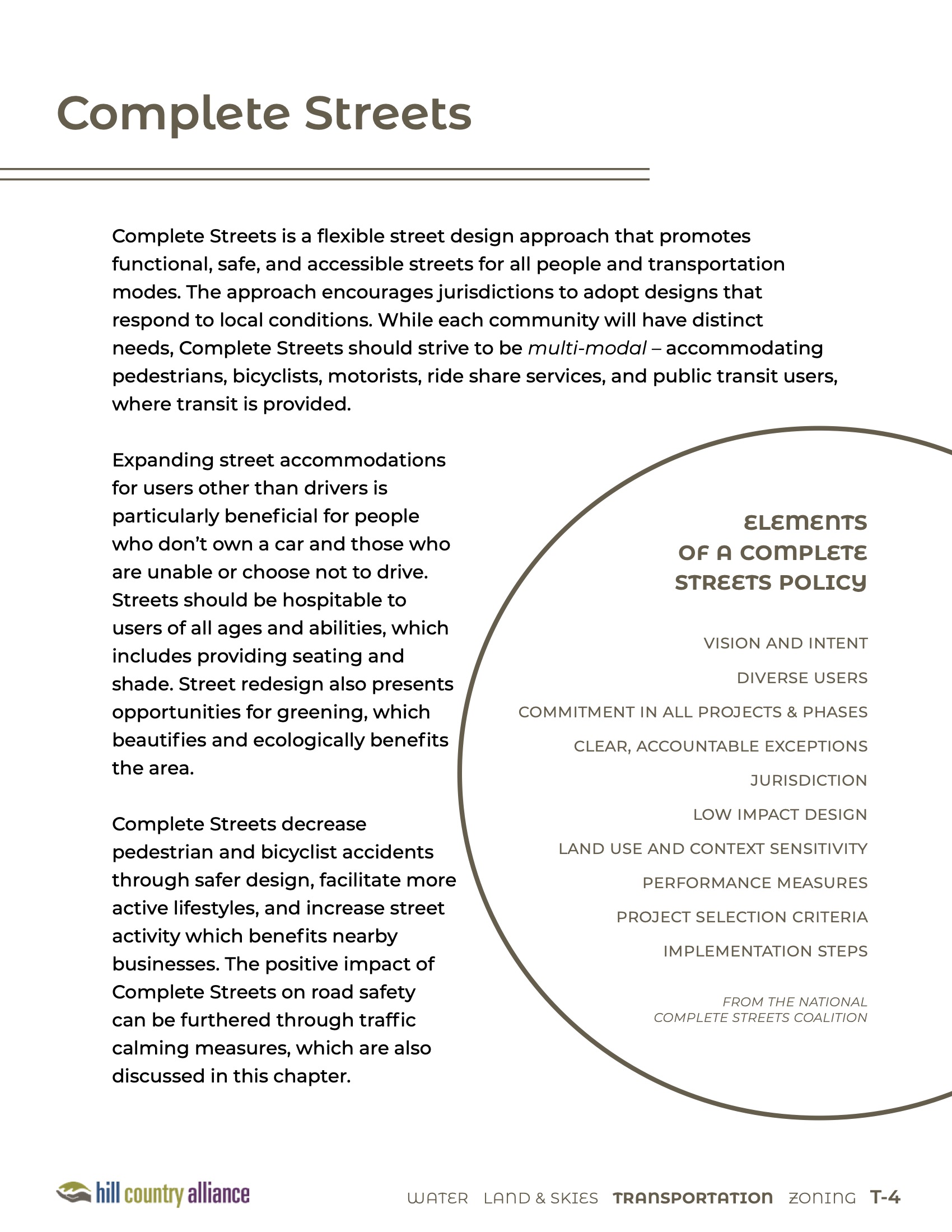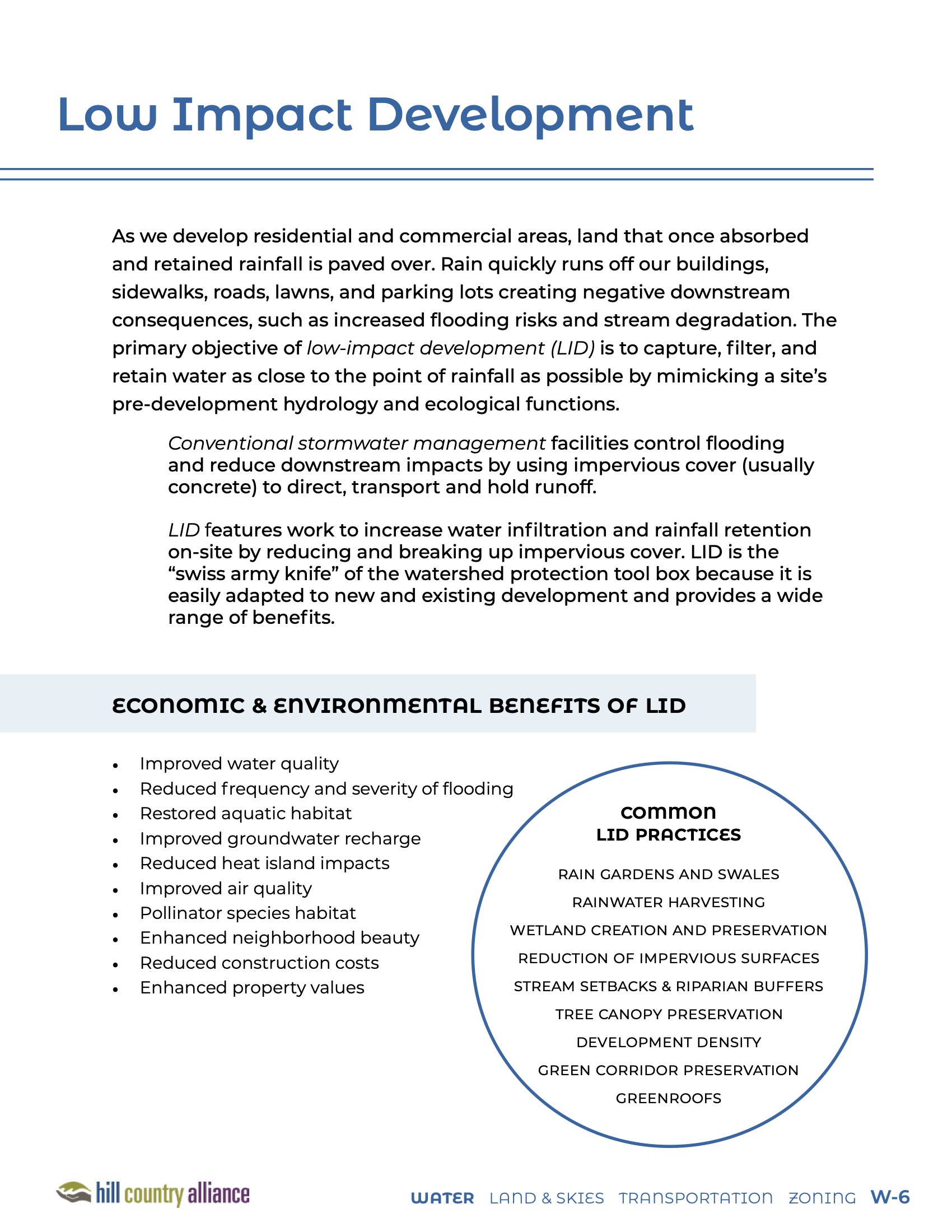Leading by Example Guidebook

Leading by Example in the Texas Hill Country
Leading by Example: Ordinances and Tools for Growing Hill Country Communities is a resource specifically designed for any Hill Country leader who wants to promote more thoughtful development in their community. Divided into four main chapters – Water, Land & Skies, Transportation, and Zoning & Development – this comprehensive resource offers short guides on ordinances and best practices to help communities build a more sustainable future.
These guides are starting points from which you can learn more, set priorities, and adopt the policies that are right for your town. If you want to learn more about a particular subject, our team at the Hill Country Alliance can provide further assistance. Nobody says local government is easy – but together we can shape the future of the Hill Country!
Check it out: Watch this ~1-minute companion video to learn how to use the guidebook!
“With thoughtful local policies, Hill Country communities can enjoy the benefits of growth while limiting the negative impacts on our region’s unique character and environment.“ – Cliff Kaplan | Hill Country Alliance
How to Use this Resource
This guidebook is organized into topical chapters: Water, Land & Skies, Transportation, and Zoning & Development. Each chapter contains guides that focus on a particular ordinance your community may be interested in adopting. Each guide introduces the ordinance topic and includes strong example ordinances, resources for further research, and a list of best practices.
- Example Ordinances: A selection of ordinances from the Hill Country and beyond are available for download throughout this guidebook. Strong components and necessary context are included as needed. City Names and underlined text link to ordinances and code sections.
- Resources: The guides are snapshots of ordinances. Resources include relevant organizations and guiding documents that provide more in-depth information about each topic. Underlined and italicized titles link to the corresponding document.
- Best Practices: A compilation of methods to undertake when crafting the ordinance. These suggestions are widely accepted as the most responsible and effective procedures for the given topic.
Download the full guidebook or each chapter individually at the links below!
- Chapter One: Water
- Chapter Two: Land and Skies
- Chapter Three: Transportation
- Chapter Four: Zoning and Development
Water
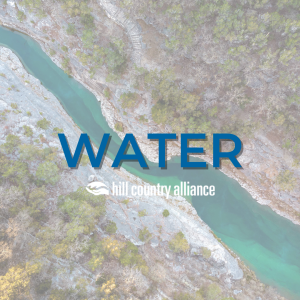 The Texas Hill Country is a region defined by its water resources, from our iconic rivers and lakes to our renowned swimming holes. As the region grows, more pressure is placed on our resources. It is imperative we make the most with what we have. In adopting water conscious ordinances, local governments can do their part in promoting smart water use.
The Texas Hill Country is a region defined by its water resources, from our iconic rivers and lakes to our renowned swimming holes. As the region grows, more pressure is placed on our resources. It is imperative we make the most with what we have. In adopting water conscious ordinances, local governments can do their part in promoting smart water use.
This chapter includes ordinances to address water quality and quantity – from promoting small-scale best practices like rainwater harvesting or drought watering restrictions, to larger-scale measures like holistic watershed protection planning.
Click here to explore the Water chapter.
Guides featured:
- Watershed Protection & Planning
- Low Impact Development
- Impervious Cover Limits
- Stream Setbacks
- Water Conservation
- Rainwater Harvesting
- Water Reuse
- Water-wise Landscaping
Land and Skies
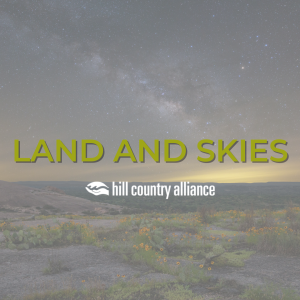 The Hill Country is known for its scenic beauty and diverse wildlife, as well as its unique geological formations and water resources. Preserving open space, star-filled skies, native trees, and plant communities is essential to the health and well-being of the region’s residents. Preserving open space and habitat quality ensures that future generations of residents and visitors will have access to the natural resources, beauty, and outdoor recreational opportunities that make the Hill Country unique.
The Hill Country is known for its scenic beauty and diverse wildlife, as well as its unique geological formations and water resources. Preserving open space, star-filled skies, native trees, and plant communities is essential to the health and well-being of the region’s residents. Preserving open space and habitat quality ensures that future generations of residents and visitors will have access to the natural resources, beauty, and outdoor recreational opportunities that make the Hill Country unique.
Click here to explore the Land & Skies chapter.
Guides:
- Open Space Preservation
- Tree Preservation
- Outdoor Lighting
- Conservation Subdivision Design
- Parkland Dedication
Transportation
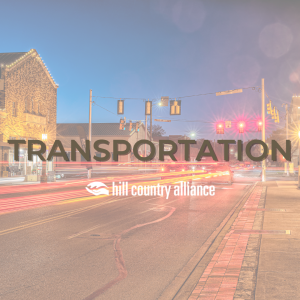 As walking and biking become popular modes of transportation again, our towns need streets and sidewalks that meet the needs of all users. The following guides can help cities build infrastructure with safety, efficiency, and walkable downtowns in mind, no matter their size.
As walking and biking become popular modes of transportation again, our towns need streets and sidewalks that meet the needs of all users. The following guides can help cities build infrastructure with safety, efficiency, and walkable downtowns in mind, no matter their size.
Click here to explore the Transportation chapter.
Guides:
- Complete Streets
- Traffic Calming
- Sensible Parking Requirements
- Bike Parking
Zoning and Development
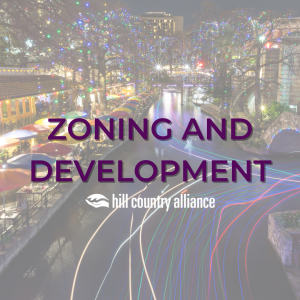 The Texas Hill Country is growing rapidly. Growth and development can bring new businesses, jobs, and people who enrich our communities, but, if not approached thoughtfully, it can create fiscal challenges for our local governments and turn our distinct Hill Country towns into anywhere-America. Texas state law limits regulations on growth and development in unincorporated areas, but cities can take steps to ensure communities within their boundaries are growing with intention and care.
The Texas Hill Country is growing rapidly. Growth and development can bring new businesses, jobs, and people who enrich our communities, but, if not approached thoughtfully, it can create fiscal challenges for our local governments and turn our distinct Hill Country towns into anywhere-America. Texas state law limits regulations on growth and development in unincorporated areas, but cities can take steps to ensure communities within their boundaries are growing with intention and care.
This chapter includes ordinance guides for cities that want to preserve their sense of place and natural resources while embracing new development.
Click here to explore the Zoning & Development chapter.
Guides:
- Overlay Districts
- Historic Preservation
- Signs
- Impact Fees
- Infill Development
- Architectural Standards


